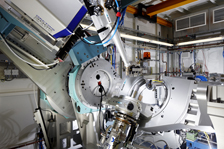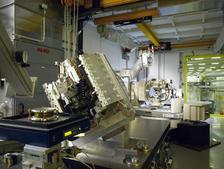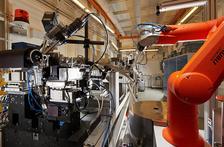The experimental techniques used at the beamlines available at a light source can be classed in the four categories below, where each corresponds to measurements regarding a fundamental physical quantity.
Spectroscopy (energy) utilizes the measured energies of radiation emitted or absorbed by the sample to analyze chemical bonding and electron motion.
Scattering (momentum) uses the diffraction pattern generated by light being deflected off the atomic lattice of crystals or the atoms in large molecules to map out their positions in space.
Imaging (position) encompasses all techniques which generate a very highly resolved image of a sample, basically using the light source like a very powerful microscope. It is complementary to the scattering and spectroscopy, since it operates directly in real space, while the other two deduce information from measurements in reciprocal space.
Which technique is best used depends on the desired spatial resolution, since small length scales in real space stranslate into large scattering angles in diffraction/scattering experiments.
Dynamics (time) studies the development of a process as time progresses. Utilizing the light source's extremely short pulses, it can be combined with any of the above techniques and will not be further discussed. This is especially important in applications of free electron lasers (FELs).
A host of specific techniques suited to the study of specific properties fall into each category, which will not all be described in detail, and some will be visualized in example experiments.








